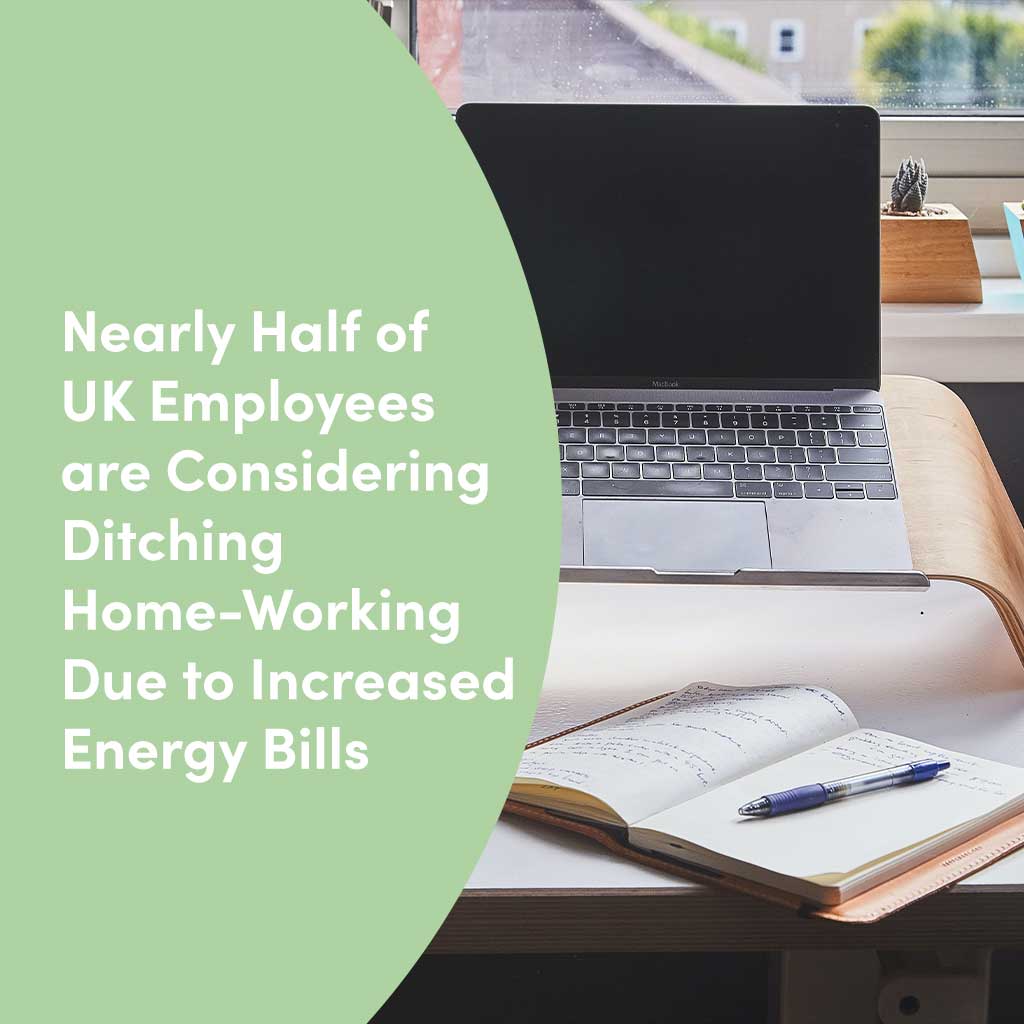Keeping costs low is at the top of everybody's mind - especially with Christmas on the horizon. But one cost you might not have factored into your monthly budget is the running expenses of your home office.
In 2021 we conducted research into these hidden costs and analysed how this may impact our choice of working location. What we found was that when the energy price cap was increased in October 2021, the average cost of working from home – the cost of running essential appliances five days a week - had increased to £90.64 per month, or £1,087.68 per year, from £89.16 per month (£1,069.92 per year) in 2020.
In comparison, average full-time office workers were spending just £64 a month commuting. Overall, swapping the convenience of the home office for the actual office was offering an estimated saving of £27 per month.
In this article
About our survey
In 2023, we wanted to revisit this topic to see if this has changed at all. We conducted another survey of 2,000 UK adults, to find out their preference of working location, and any measures they will take to reduce their home office expenses.
Alongside our survey we calculated the cost of running appliances per week, such as a kettle and laptop, considering the new energy price cap on October 1st (0.27p) to discover how much it costs to work from home. This was the same way we conducted the calculations as in 2021 for a fair comparison.
How much can Brits save on their energy bills by working in the office?


Our survey revealed that on average, commuting to work everyday costs us £25 per week (or £1,200 per year). In 2021, this was 36% less, averaging at £16 per week (£832 per year).
Just under one in ten (9%) are lucky enough to live within walking/cycling distance to the office, and therefore spend nothing on their commute.
Our desk research shows it can cost around £29 per week to work from home in winter in 2023, considering all the electricity required to run all essential items such as a laptop and bulbs, as well as heating costs. This works out at around £117 per month, or a whopping £1,400 per year alone.
When you compare the cost of commuting versus running a home office, the data reveals that Brits can save as much as £200 on their annual energy bill by heading into their place of work instead of staying at home.
To combat this, over two fifths (41%) said they will avoid turning the heating on AT ALL while they work from home, which may in turn impact their productivity.
One in ten (10%) also intend to work in the dark with no lights on and a further 7% said they plan to work from a nearby coffee shop or coworking space – this was most common among the 25-34 age group, where almost one in five (17%) said they would consider doing this.
Which of your home office appliances are the most expensive to run?


To work out the true cost of working from home, we explored how much electricity common home office appliances need. We found that kettles and your desktop computer alone are costing you over £2 a week to run. However, it’s the heating that can cost you a pretty penny.
During the winter months, if a remote worker heats up their space for 4 hours, 5 days a week, they are spending on average £8.10 per week!
The findings reveal that the voltage of your electric radiator matters. Lower wattage electric radiators will cost on average only £5.40 per week, in comparison to a high wattage electric radiators, which will cost those who work from home £9.72 per week.
Cost of WFH in 2023: Running appliances per typical working week:
| Appliance | Average power rating | kWh (Power rating/1000) | Hours used in a working day | Days used | kWh per week | Cost to run per kWh in 2023 | Cost to run per week in Oct 2023 (£) |
| Microwave | 1000 | 1 | 0.08 | 5 | 0.41 | 0.27 | £0.10 |
| A single bulb | 18 | 0.02 | 4 | 5 | 0.36 | 0.27 | £0.11 |
| Kettle | 3000 | 3 | 0.5 | 5 | 7.5 | 0.27 | £0.20 |
| Desktop computer | 200 | 0.2 | 7.5 | 5 | 7.5 | 0.27 | £0.20 |
| Lower wattage electric radiator | 1000 | 1 | 4 | 5 | 20 | 0.27 | £0.20 |
| Higher wattage electric radiator | 1800 | 1.8 | 4 | 5 | 36 | 0.27 | £0.20 |
| Space heater | 1500 | 1.5 | 4 | 5 | 30 | 0.27 | £0.27 |
| Laptop | 100 | 0.1 | 7.5 | 5 | 3.75 | 0.27 | £1.10 |
| Printer | 100 | 0.1 | 0.17 | 5 | 0.08 | 0.27 | £2.25 |
| Coffee machine | 1000 | 1 | 0.17 | 5 | 0.83 | 0.27 | £2.25 |
| Paper shredder | 150 | 0.15 | 0.08 | 5 | 0.06 | 0.27 | £5.40 |
| Plasma TV | 200 | 0.2 | 1 | 5 | 1 | 0.27 | £8.10 |
| LCD TV | 150 | 0.15 | 1 | 5 | 0.75 | 0.27 | £9.72 |
| Total per week | £29.23 |
In which cities are workers most likely to be heading back to the office?
Following this, we looked at which UK cities employees are most likely to go back to the office in a bid to keep their home energy bills down. Our survey revealed that workers in Belfast (50%), London (46%) and Southampton (41%) are the most likely.
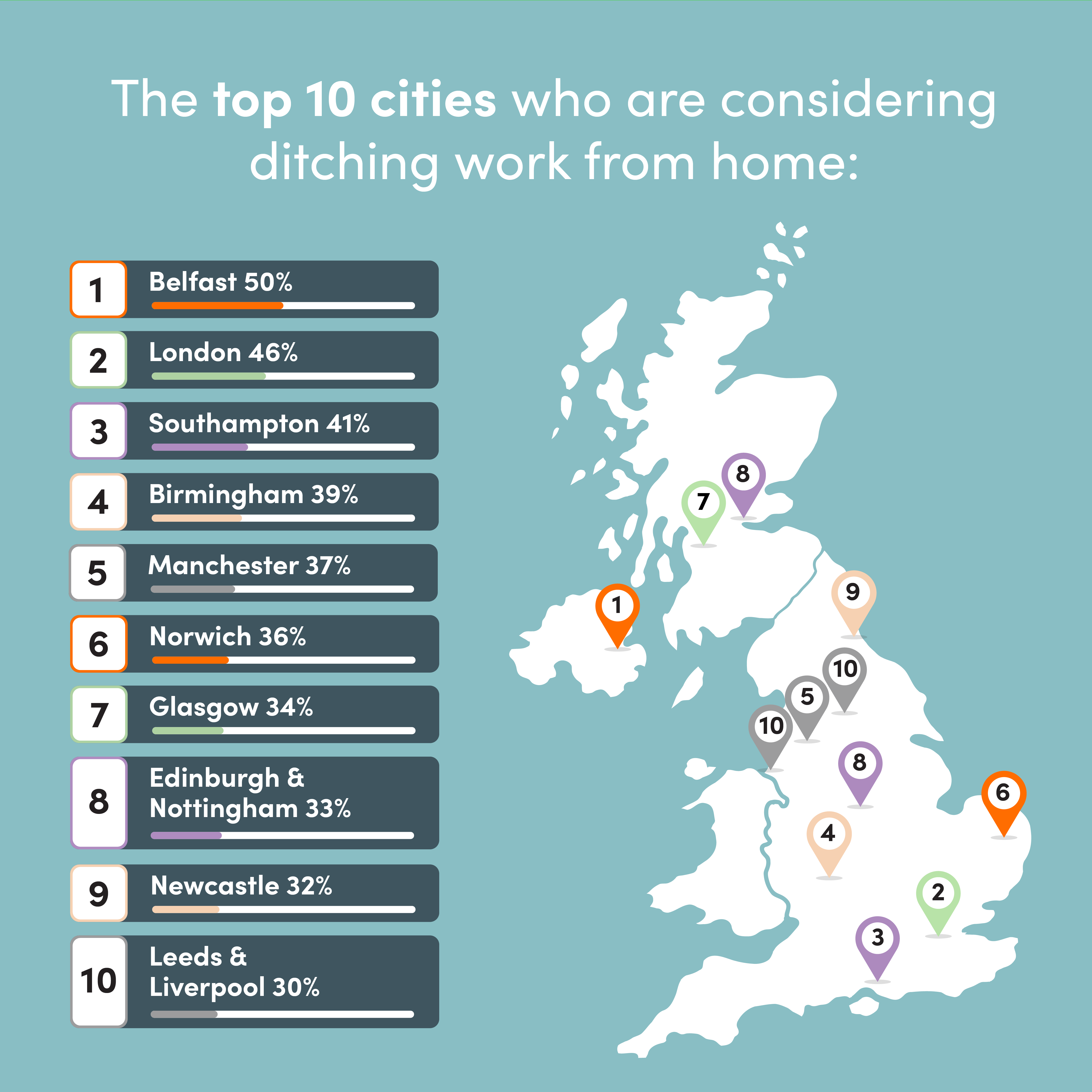

The top 10 cities who are considering ditching work from home:
- Belfast (50%)
- London (46%)
- Southampton (41%)
- Birmingham (39%)
- Manchester (37%)
- Norwich (36%)
- Glasgow (34%)
- Edinburgh & Nottingham (33%)
- Newcastle (32%)
- Leeds & Liverpool (30%)
Can’t work from the office? Here’s how to keep your energy bills down this winter
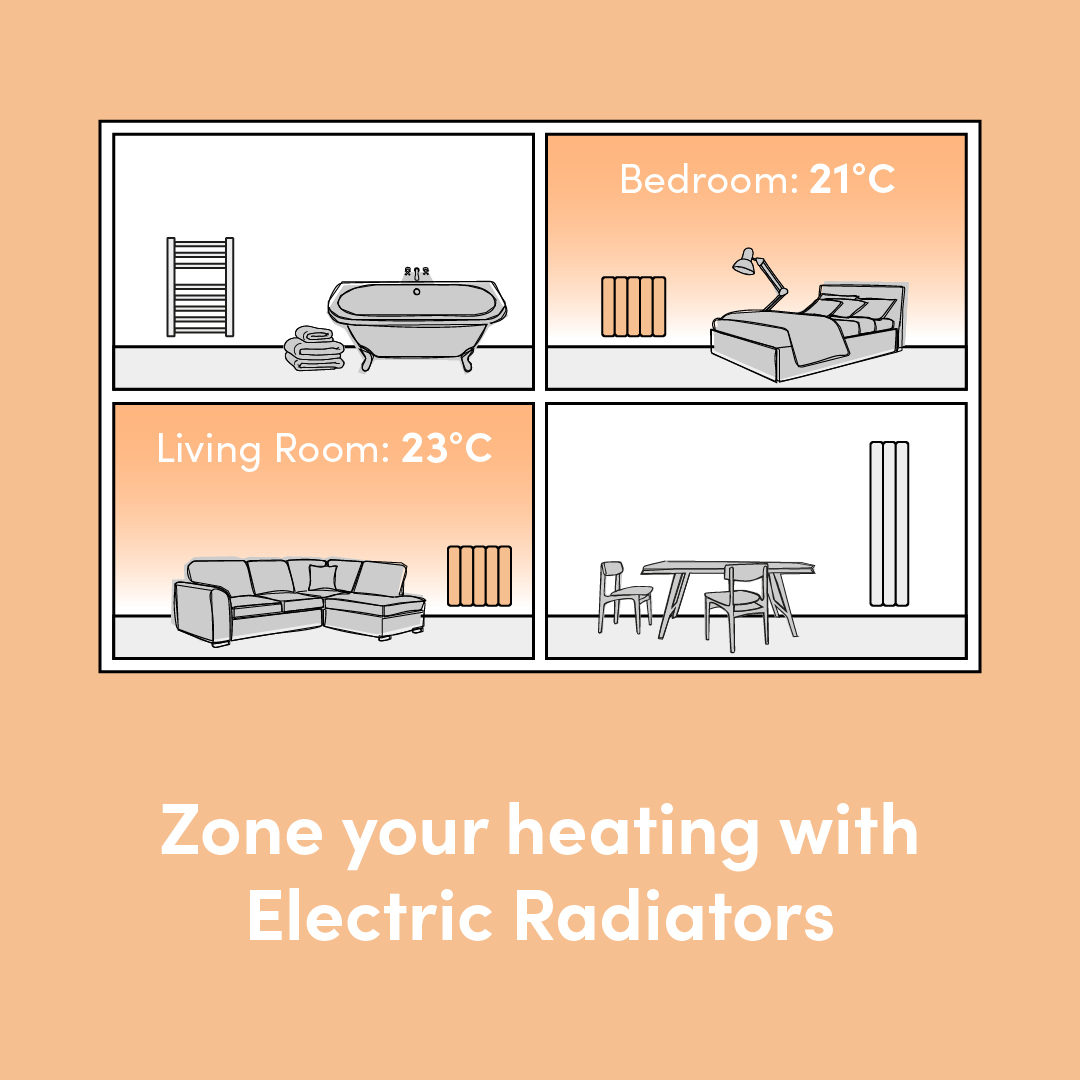

1. Zone your heating
The concept of zoned heating is a simple one: you prioritise which areas need heating the most at different times of the day.
If you have a separate home office, you won’t need to warm your bedrooms and other living spaces during the day while you work. Some modern smart central heating systems give you the option to choose which areas are heated by using an app – but these systems aren’t widespread in most homes and can be expensive to install. Instead, having an electric heater in your working space means you can leave your ‘main’ gas central heating system thermostat alone and focus on heating the specific area that you’ll be spending most of your time.
2. Pick your electric heater wisely
Electric radiators typically fall into three separate types, each with their own benefits:
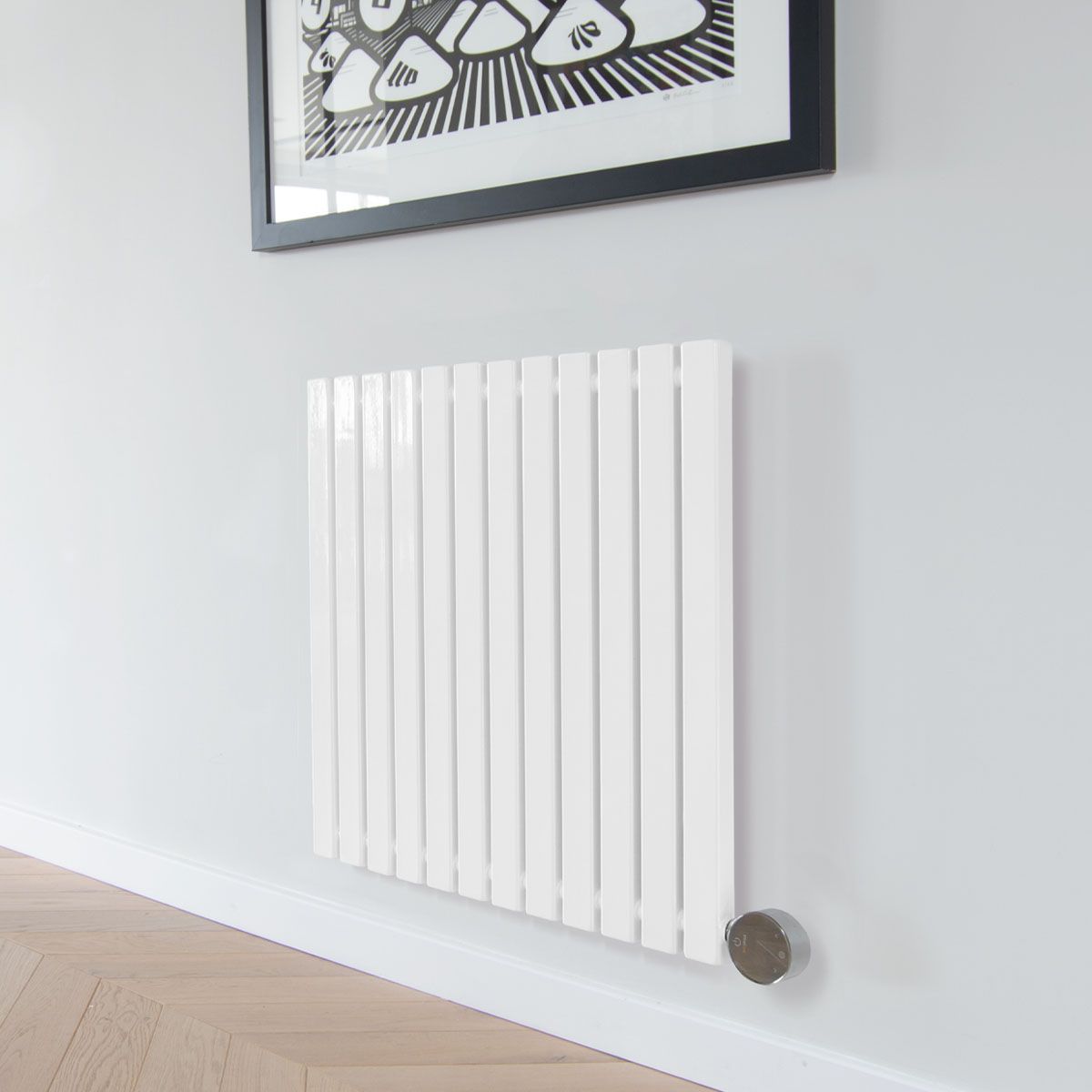

Oil-filled radiators come in stylish contemporary builds and use highly retentive thermal fluid to provide warmth. They take a bit longer to get up to temperature but they’re great for larger, airy spaces as they retain their heat for longer. They’ll still kick out heat as they slowly cool down once you’ve knocked the power off.


Ceramic radiators use metal wires inside a stony material and dish out intense heat that can warm up hard-to-heat spots. They also retain a lot of warmth, meaning they’re slow to cool for more efficient heating.
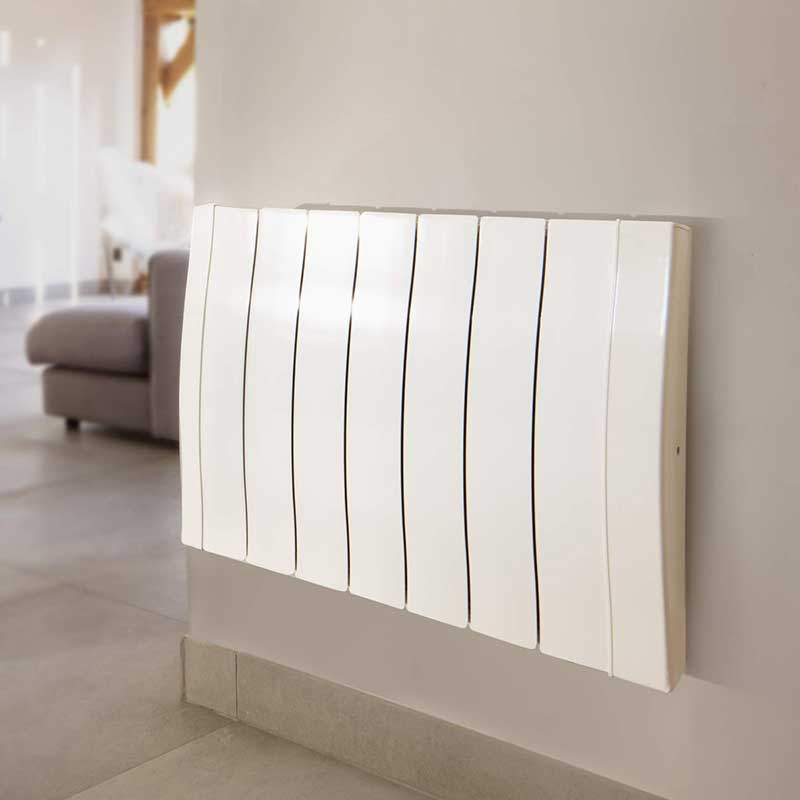

Dry thermal radiators are usually branded as ‘oil-free’ as they use aluminium heating elements instead of liquid. This makes them highly responsive, reaching temperatures quickly for effective warmth. Plus, they’re also lightweight and super practical for a smaller home office.
3. Calculate the cost of your heater
The type of property you live in, the size of the room, the insulation you have in place and even the items in a room can influence how easy it is to heat.
As an example, let’s take a 10m2 room – a typical size in many houses and a common spot for a home office. A 1000w electric heater will comfortably heat a space like this and costs around 30p per hour to run. On a chilly winter morning, three hours of run time should keep things warm for the rest of the afternoon – especially if you get lucky with a bit of sun!
Heaters with fitted thermostats will automatically shut off once your optimal comfort level is reached and then switch on again if it drops.
So, staying toasty for your working day will set you back 90p in energy costs – almost certainly less than it would cost to crank the central heating up over the same amount of time. It’s also worth bearing in mind that heaters with fitted thermostats will automatically shut off once your optimal comfort level is reached and then switch on again if it drops. This efficiently regulates room temperature and will ultimately help to reduce running costs.
Our simple calculation estimates how much you’re likely to spend in 5 easy steps.
Why buy an electric heater when I have central heating?
So, why should you buy an electric heater instead of using the central heating you already have? Well, the benefits of an electric heater are far-reaching:
Low maintenance


Central heating systems need checking annually and can suffer from wear and tear over time. Once your electric heater is in place, you can keep using it worry-free as there is no yearly service required.
Simple installation


Installation of electric heaters is a simple case of plugging it in and you're done. Wall-mounted options will come with all the fixtures and fittings needed and it’s a simple job if you have a few basic tools to hand.
The greener option


When paired with renewable energy, electric is a completely carbon neutral heating solution. If your energy supplier uses renewable sources, you’ll be doing your bit for the planet.
Safety


There are no risks of carbon monoxide leaks or scalding water with electric heaters. Child-safety features also offer an added layer of protection on some appliances.
With so many models on the market, deciding on the perfect electric radiator may leave you feeling spoilt for choice.
Our buying guide is here to make the process as pain-free as possible!
Working from home this winter?
With 44% of us now working from home in some capacity, the need for a well heated workspace is more important than ever this winter. So, if you're looking to save some money without compromising your comfort, electric radiators are the way to go. We have the best range on the market at affordable prices, so browse our collection to find the perfect fit for your space.
Key learnings
✓ Running a home office can be costlier than commuting to the office, with the average monthly cost of working from home in 2023 being £90.64, compared to £64 a month for commuting.
✓ Swapping the convenience of a home office for the actual office can result in an estimated yearly saving of £200 on their energy bills.
✓ Home office appliances like kettles and desktop computers are among the most expensive to run, costing over £2 a week, while heating during the winter can add up to £8.10 to £9.72 per week, depending on the type of radiator used.
✓ If you're working from home this winter, electric heating is the ideal choice. Electric heaters enable you to zone your heating by warming only the room you're in. With straightforward DIY installation, no maintenance requirements, and 100% efficiency at point of use, electric heating helps you optimise your energy usage and reduce the additional costs associated with working from home.
Related Articles
Methodology
For calculating the cost of running appliances per week, we worked out the kWh of commonly used household items during a working day, such as a kettle and laptop. We then estimated how much these items would be in use throughout the day and week. We then multiplied this number by the cost per kWh after the new energy price cap on October 1st (0.27p) to discover how much it costs to work from home. This was the same calculations as in 2021 for comparison.
Sources:
Survey of 2,000 UK adults, of which 777 work from home, ran in September 2023
Desk research sources:
- https://www.ofgem.gov.uk/publications/energy-price-cap-default-tariff-1-october-31-december-2023
- https://commonslibrary.parliament.uk/research-briefings/cbp-9714/
- https://www.ofgem.gov.uk/energy-data-and-research/data-portal/wholesale-market-indicators
- https://commonslibrary.parliament.uk/research-briefings/cbp-9428/
- https://www.ons.gov.uk/economy/inflationandpriceindices/articles/shoppingpricescomparisontool/2023-05-03
- https://www.ons.gov.uk/peoplepopulationandcommunity/housing/articles/monthlymortgagerepaymentsup61foraveragesemidetachedhomeintheuk/2023-03-08
- https://www.gov.uk/tax-relief-for-employees/working-at-home
- https://www.statista.com/statistics/1207746/coronavirus-working-location-trends-britain/
- https://www.ons.gov.uk/employmentandlabourmarket/peopleinwork/employmentandemployeetypes/timeseries/mgrz/lms
- https://www.britishgas.co.uk/energy/guides/average-bill.html
- https://www.ofgem.gov.uk/publications/energy-prices-fall-again-winter
- https://www.britishgas.co.uk/energy/energy-saving/energy-saving-tips.html
Appliance wattages: https://unboundsolar.com/solar-information/power-table
Formula to calculate consumption: https://www.energuide.be/en/questions-answers/how-can-i-calculate-the-consumption-of-an-electrical-appliance/94/
Electric radiator wattage: https://www.electricradiatorsdirect.co.uk/ecostrad-iq-ceramic-wifi-controlled-electric-radiators/









